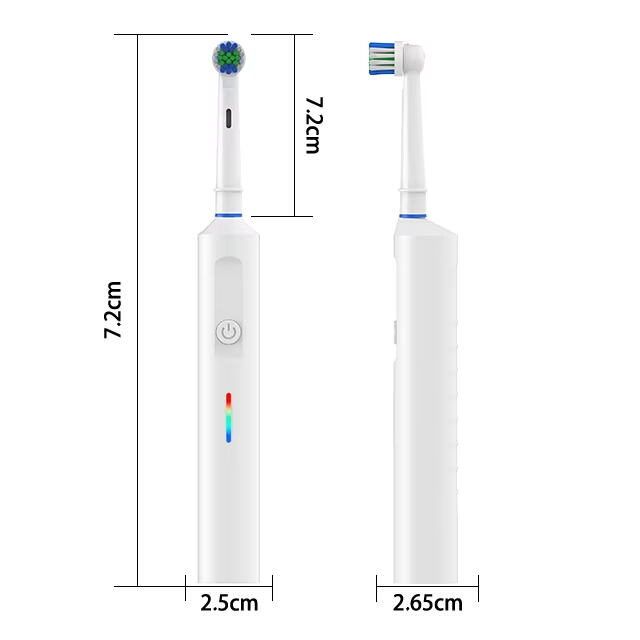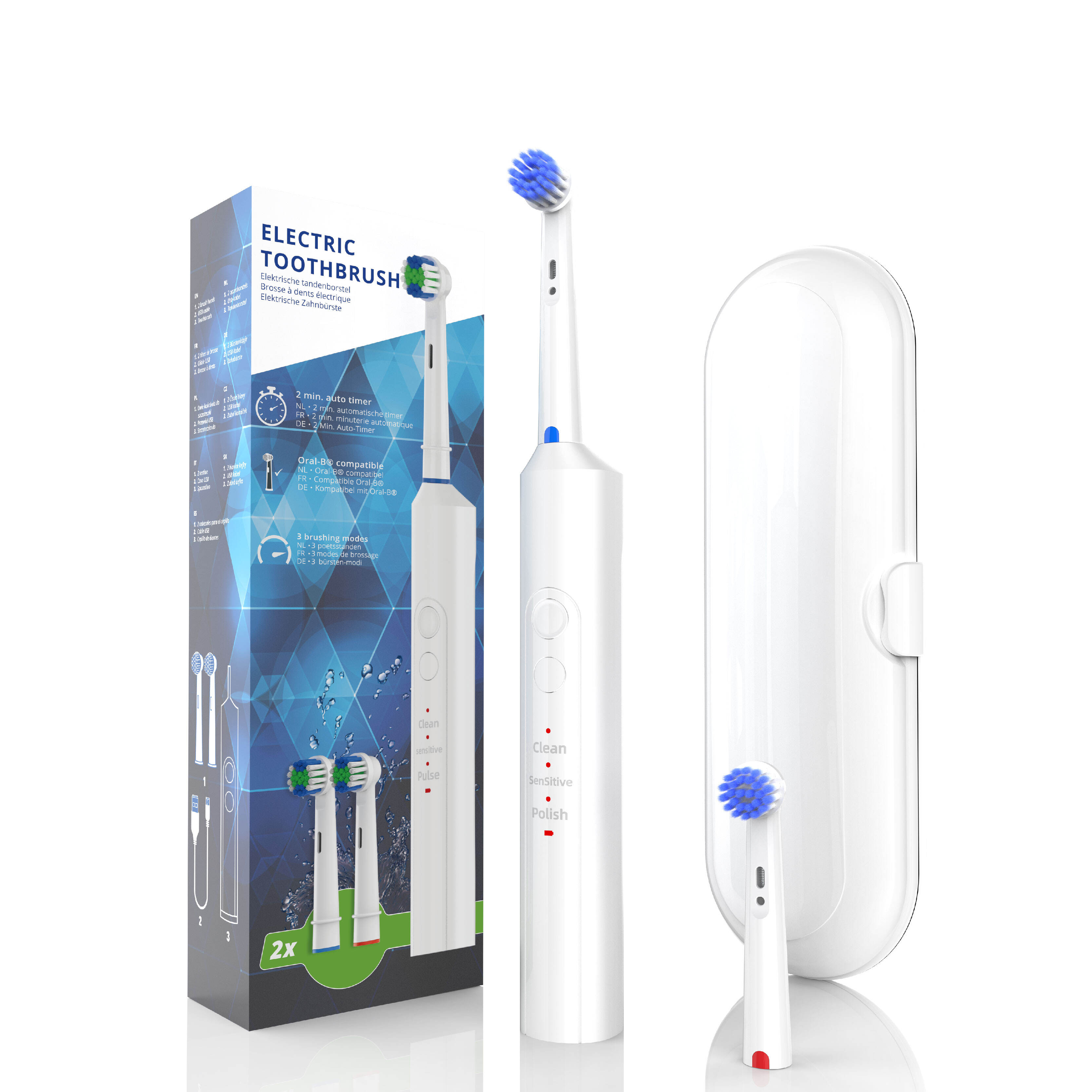Essential Features That Set Apart Electric Toothbrushes for Different Ages
Electric toothbrushes have revolutionized oral hygiene, offering specialized solutions for both children and adults. Understanding the key distinctions between children's and adult electric toothbrushes is crucial for making informed decisions about dental care. These differences go far beyond simple aesthetic variations, encompassing important factors like size, power settings, safety features, and technological capabilities.
Modern dental care recognizes that children and adults have distinct oral health needs, leading manufacturers to develop specialized electric toothbrushes for each age group. While both types share the common goal of maintaining good oral hygiene, their design and functionality are carefully tailored to address age-specific requirements and challenges.

Design and Ergonomic Considerations
Handle Design and Grip Features
Children's electric toothbrushes typically feature smaller, more colorful handles with rubberized grips designed for smaller hands. These handles often incorporate fun designs, cartoon characters, or interactive elements to make brushing more engaging. The grip section is usually wider and more textured to prevent slipping, considering that children are still developing their motor skills.
Adult electric toothbrushes, in contrast, have sleeker, more sophisticated designs with ergonomic considerations for larger hands. They often feature slim, streamlined handles with subtle grip patterns and premium materials. The balance point is carefully calculated for optimal control during brushing, accommodating various holding positions preferred by adults.
Brush Head Size and Design
The brush head size represents one of the most significant differences between children's and adult electric toothbrushes. Children's brush heads are notably smaller, typically ranging from 1/2 to 2/3 the size of adult versions. This smaller size allows better access to a child's smaller mouth and developing teeth formation.
Adult brush heads are larger to cover more surface area efficiently and come in various specialized designs for different cleaning needs, such as gum care, whitening, or sensitive teeth. The bristle arrangement and density also differ, with children's brushes featuring softer bristles to protect developing tooth enamel and sensitive gums.
Technical Specifications and Performance
Power and Speed Settings
Children's electric toothbrushes generally operate at lower power settings to ensure gentle cleaning and prevent potential damage to developing teeth and gums. Many models offer a single, consistent speed setting to maintain simplicity and safety. The vibration frequency and brush movement patterns are calibrated specifically for young users.
Adult electric toothbrushes typically provide multiple power settings and brushing modes, allowing users to customize their cleaning experience. These can include intense cleaning modes, sensitive settings, whitening functions, and massage options. The motor power and vibration intensity are significantly higher, designed for more thorough plaque removal and advanced oral care needs.
Battery Life and Charging Systems
Due to their simpler functionality, children's electric toothbrushes often feature longer battery life with basic charging systems. Many models use replaceable batteries or simple USB charging options, making them more portable and easier to maintain. The battery indicators are usually straightforward, often using simple light signals to indicate low power.
Adult models frequently incorporate advanced lithium-ion batteries with sophisticated charging bases. They may include features like rapid charging, wireless charging capabilities, and detailed battery level indicators. The power consumption is typically higher due to stronger motors and additional features, requiring more frequent charging.
Smart Features and Technology Integration
Educational and Entertainment Elements
Modern children's electric toothbrushes often include interactive features designed to make brushing fun and educational. These may include built-in timers with music or sound effects, companion mobile apps with games and rewards, and LED lights that make brushing entertaining. Some models even connect to smartphones to track brushing habits and provide positive reinforcement.
While adult toothbrushes may also include smart features, they focus more on performance monitoring and technique improvement. Advanced models offer pressure sensors, brushing coverage maps, and detailed analytics about brushing habits through connected apps, prioritizing efficiency and effectiveness over entertainment.
Connectivity and App Integration
Children's smart toothbrushes typically feature simplified app interfaces with gamified elements, character interactions, and basic progress tracking. The focus is on developing good brushing habits through engaging, age-appropriate content and positive reinforcement systems.
Adult smart toothbrushes often include more sophisticated connectivity features, offering detailed data analysis, personalized brushing recommendations, and integration with broader health tracking systems. These apps may provide advanced features like custom brushing routines, real-time technique feedback, and comprehensive oral health reports.
Safety and Maintenance Features
Protection Mechanisms
Children's electric toothbrushes incorporate multiple safety features, including waterproof sealing, shock-resistant materials, and protective covers for battery compartments. Many models include automatic shut-off features to prevent overuse and special mechanisms to ensure brush heads are securely attached.
Adult models focus on durability and performance while maintaining safety standards. They often feature more sophisticated water resistance ratings, premium materials for longevity, and advanced protection against electrical malfunctions. The emphasis is on providing professional-grade cleaning while ensuring user safety.
Cleaning and Storage Requirements
The maintenance needs of children's electric toothbrushes are designed to be simple and straightforward. They often include easy-to-clean surfaces, removable parts for thorough cleaning, and basic storage solutions. The materials used are typically more resistant to rough handling and frequent cleaning.
Adult electric toothbrushes may require more detailed maintenance routines, including specialized cleaning modes for the device itself, UV sanitizing stations, and specific storage conditions to maintain optimal performance. The charging bases often double as storage solutions, with features to keep multiple brush heads clean and organized.
Frequently Asked Questions
When should a child transition from a children's to an adult electric toothbrush?
The transition typically occurs between ages 8-12, depending on the child's manual dexterity, mouth size, and ability to handle more powerful brushing motions. Consult with a dentist to determine the right time for your child to make this switch.
Can adults use children's electric toothbrushes in a pinch?
While possible, it's not recommended for regular use. Children's toothbrushes lack the power and features needed for effective adult oral care. The smaller brush heads and lower power settings may not provide adequate cleaning for adult teeth and gums.
How do the costs compare between children's and adult electric toothbrushes?
Children's electric toothbrushes are generally less expensive due to simpler features and technology. Adult models, especially those with advanced features and smart capabilities, typically command higher prices but offer more sophisticated cleaning capabilities and longer-lasting construction.


